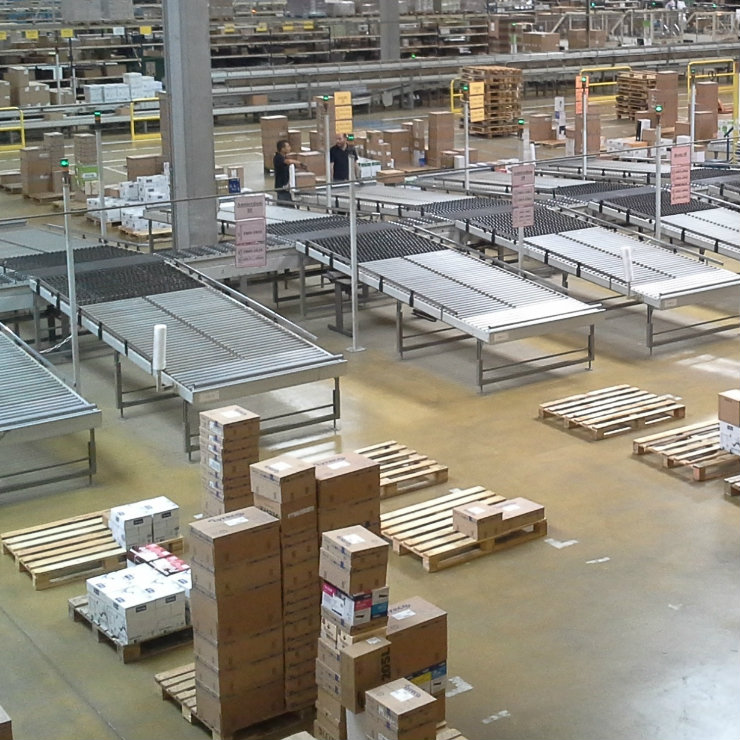Tydzień w gospodarce
Category: Trendy gospodarcze

(Ben_Kerckx, CC)
CE Financial Observer: Margins of companies based in Poland decreased by 18.6 per cent over 15 years, and the decline affected 70 per cent of them according to your study. How was this calculated?
Jakub Mućk: (JM): Let us start with the fact that margins are determined as the difference between the marginal income and the marginal cost. It is important, however, that we do not confuse the margin with the remuneration for the owner’s capital, because the margin is something more, a kind of bonus for the fact that the product of a given company is unique and consciously chosen instead of the products of its competitors, which gives the possibility to set prices above the marginal cost.
Michał Gradzewicz (MG): Yes, the margin in our study is defined as the mark-up of the price of a product over the marginal cost. It was difficult to calculate it, because there is no data on both individual prices and marginal costs. Without going into details, I would like to say that we were helped by economic theory and a reference to De Loecker’s and Warzyński’s methodology from 2012, which sets margins from dependencies resulting from the analysis of companies’ behavior that minimizes costs.
Such a clear drop in margins indicates the weakness of the Polish economy, because somewhere else the margins did not behave so, or its strength, because it quickly adapted to the creation of global value chains?
MG: This is a difficult question, requiring a subjective evaluation. It is obvious that from the point of view of companies, higher margins are better than lower margins, because they allow for a safety cushion in case of disturbances. High margins can be used by the companies for quite risky research and development of new products and technologies. On the other hand, lower margins are better for consumers because they are associated with lower prices. It also has macroeconomic consequences — low prices lower PPI inflation, i.e. the measure of inflation of producer goods.
However, Poland is in the process of convergence, i.e. equalizing income levels with richer Western European countries. Why does this not apply to the margins of companies?
MG: We are trying to link the reflection on margins with the globalization process. And we have observed that at the beginning of the convergence process the companies involved in exports had much higher margins, which then fell, but still remained above the margins of non-exporters. This decline can be partly explained by the growing competition from companies in the more profitable export market — the success of the first exporters led to the entry of other companies into the export market. This increased competition and, in the absence of other distinguishing factors, meant that Polish companies had to compete with each other in terms of price and, as a result, margins.
Was it possible not to go abroad and keep higher margins in the country?
MG: This is a reflection on alternative history. For the sake of clarity, we are not saying that 15 years of natural development of the economy, increasing the efficiency of production and joining the global supply chains were unnecessary, because margins fell. There is a huge amount of theoretical and empirical literature which proves the opposite — a presence in global supply chains is positive for the economy, generates added value and jobs, and enables the transfer of technology. This is accompanied by a drop in margins. To put it simply, it is better to have a lower margin on a larger market than a high margin on only the domestic market, and it is better for both companies and consumers.
So what’s the problem with falling margins?
MG: Our study only points out that the scale of the positive economic developments depends on where we are in this global value chain. The relationship between margins and position in the chain is U-shaped. The best way to make a profit is at the beginning of a product’s origin — at development & research, engineering and design stage — and at the other end of the chain — when we are close to the end user and are involved in marketing and sales. The middle, i.e. the bottom of the U, is relatively unattractive because it consists of repetitive, standardized production activities that can be carried out in many countries, and here the margin is the lowest. Poland, like many other countries in the Central and Southeast Europe (CSE), is here. Of course, there are sectors that are either much further away or much closer to the final product, but most of the industry is concentrated near the center.
JM: In other words, we show that a share of the pie in different places in the global production network is uneven.
In today’s economy, production is the least important, and more important is designing new products and selling them?
MG: In simple terms: yes. In practical terms, it means that Polish companies, if they want to have higher margins, should move either closer to the design or closer to the final customer. However, I do not undertake an assessment of how to do it — whether the companies are able to do it on their own or with a state aid, or whether Poland has the knowledge and resources of appropriate employees to make such changes.
There is a Polish company that manufactures seats for a large European car manufacturer and probably buys materials in China. I understand that the pressure on margins is mutual — the customer wants to pay as little as possible for semi-finished products, Asian suppliers can raise prices. The margin of those in the middle has to melt, right?
JM: We can’t talk about a specific company, because we don’t have such data. However, we can imagine, using this example, that it is no longer about complete seats, but about their frame or parts of upholstery, for example. Often we do not realize that the international division of labor has gone so far, since the beginning of the liberalization of trade and capital movements two decades ago. Yes, such far-reaching specialization means that we are creating very little added value in this product. It also means that we have no control over the price that is set for the finished product on the market, and therefore we have limited control over our own margins.
The survey shows that for 15 years margins have fallen the most in the ICT and optics sectors, and this is an intuitive conclusion, because Poland doesn’t have strong companies. How can we explain the increase in margins in transport, mining and quarrying?
MG: Theory says that changes in margins may result from two factors: either changes in the market structure, i.e. increasing concentration resulting in higher margins, or low sensitivity of customers to price changes, which makes it possible to increase prices without negative consequences of a drop in demand. In the case of mining, both of these factors may be present. This is a part of the economy where there is very little such perfect textbook competition.
JM: Yes, mining may be closer to the situation of a natural monopoly, resulting simply from the distribution of resources around the world. We can also look at it through the prism of a U-shaped graph. Coal mining in Poland is in a good place, from the point of view of margins: both very close to the final demand (because many people still heat their houses with coal) and very far from the final demand (because coal is an important source of energy necessary for all parts of the economy).
You have two hypotheses explaining the drop in margins — firstly, globalization and integration into international value chains, and secondly, the lack of world-class companies in Poland that can be called “superstars”.
JM: It should be noted that since the 1970s, margins, whether in the United States or Western Europe, have been increasing rather than decreasing. In Poland, for the 15 years we have surveyed, the opposite is true. And one of the explanations is that there are companies with a global reach in developed western countries that produce products for which customers are willing to pay more, and there are no such companies in Poland. To be more precise, there are no such “superstars” of global reach, operating outside small niches in Poland. Yes, Poland do produce parts for the Martian truck or catamarans. However, it is not possible to compare with the scale of revenues and margins of the great American technological giants.
Do we know whether Polish companies aspire to go out of the bottom of this „U” curve and take part in the global competition? Maybe they are doing well in the place where they are?
MG: Certainly, the decision to export is not an easy one, and decisions which result in moving either closer to the design or closer to the customer are even more difficult. They require capital and a larger scale of activity. In the case of smaller companies, it often means losing control over the company and is connected with the problem of succession, and so on. Let us remember that Polish capitalism has only lasted for one generation and it is hard to expect a transition from the “camp-beds” [on which Polish early entrepreneurs sold their goods in the street in 1990s — editor’s note] into global stars in 30 years. One of the possibilities is to leave Polish companies alone and give them a little time, and the effects will appear on their own.
Does Poland have time? If the margins in 15 years have fallen by 18.6 per cent, how long will it take to fall to zero?
MG: Of course, it is not the case that if we observed a drop in margins in the horizon of our research in 2006-2017, the same trend can be automatically prolonged for the future. If we look at it from a slightly broader perspective, it will turn out that Poland has already had periods of increasing margins. This is indicated by the beginning of our research period, i.e. the period 2002-2005. Margin changes are longer than a typical business cycle — they are long-term processes. Similarly, today Poland is a subcontractor, largely for the German economy, but we do not know what will happen in 10 years’ time. So, I understand the provocation and confirm — this trend cannot be simply extrapolated to the future.
JM: It seems to me, however, that something can be said about the direction of these changes. If we return to the previous example of a car seat, it is likely that smaller parts than the upholstery or the seat’s frame won’t be produced any more. The point I’m trying to make is that after the collapse of world trade after 2009, the process of narrowing specialization in production slowed down, with all the consequences for margins. In the case of Polish companies, this may weaken or even reverse the trends outlined earlier.
What else don’t we know about margins?
MG: We don’t know why they actually dropped. We have quoted two hypotheses: globalization and the lack of “superstar” companies, but now we are working on a method that would allow us to determine whether demand or supply factors are behind the changes in margins. We should be presenting the results of this research soon. Another unknown is how the falling margins are important in pricing processes and how much of the persistently low inflation can be explained by these falling margins. This is also the subject of our research.
Michał Gradzewicz, PhD, and Jakub Mućk, PhD, work in the Economic Analysis Department of Poland’s central bank, NBP.



